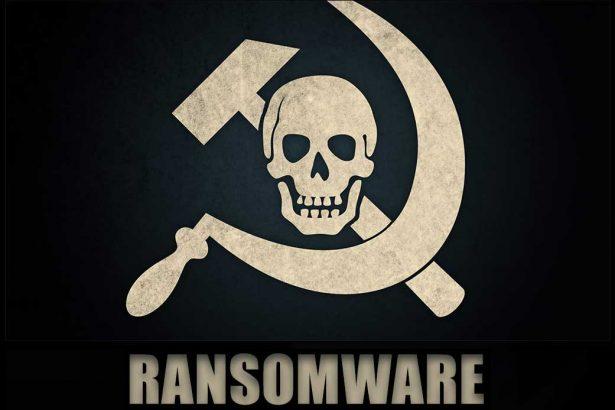Ransomware is a particularly malicious form of malware designed to extort money from individuals and organizations by encrypting their files and demanding a ransom for the decryption key. This type of malware is a significant threat in the cybersecurity landscape, affecting millions globally. Unlike traditional viruses that may merely disrupt or damage files, ransomware takes a more insidious approach by locking users out of their own data and demanding payment to regain access.
Overview of Zilla Ransomware
Zilla Ransomware is a specific strain of ransomware that targets users by encrypting their files and then demanding a ransom for the decryption key. Once Zilla Ransomware has infiltrated a system, it begins by encrypting files with a specific encryption algorithm. The files affected by this ransomware will have their extensions changed to something indicative of the attack, such as .zilla.
Installation and Functionality
Zilla Ransomware typically enters a system through phishing emails, malicious downloads, or vulnerabilities in software. Once installed, it begins its malicious activities almost immediately. The ransomware scans the infected system and starts encrypting files with a specific algorithm, making them inaccessible to the user. The encrypted files usually have a new file extension, such as .zilla, appended to their original names.
After encryption, Zilla Ransomware displays a ransom note on the user’s screen and creates a text file, often named README.txt or something similar, which provides instructions on how to pay the ransom. This note generally includes:
- Ransom Amount: The amount of cryptocurrency required to be paid, usually Bitcoin or another form of digital currency.
- Payment Instructions: Detailed steps on how to pay the ransom.
- Contact Information: An email address or other contact details for the attackers, allowing the victim to communicate with them.
- Threats: Warnings that failure to pay within a specified timeframe will result in the permanent deletion of files or the increase in ransom.
Text in the ransom note:
ZILLA
Don’t worry, you can return all your files!
If you want to restore them, write to the mail: filezilla@cock.li YOUR ID –
If you have not answered by mail within 12 hours, write to us by another mail:filezilla@cyberfear.com
Free decryption as guarantee
Before paying you can send us up to 3 files for free decryption. The total size of files must be less than 3Mb (non archived), and files should not contain valuable information. (databases,backups, large excel sheets, etc.)
How to obtain Bitcoins
Also you can find other places to buy Bitcoins and beginners guide here:
hxxp://www.coindesk.com/information/how-can-i-buy-bitcoins/
Attention!
Do not rename encrypted files.
Do not try to decrypt your data using third party software, it may cause permanent data loss.
Decryption of your files with the help of third parties may cause increased price (they add their fee to our) or you can become a victim of a scam.
Purpose and Threat of Ransomware
The primary purpose of ransomware, including Zilla, is financial gain. By encrypting important files, the ransomware creators leverage the victim’s reliance on those files to demand payment. The threat posed is not only financial but also operational, as it can halt business processes or personal activities if critical data becomes inaccessible.
Symptoms of Zilla Ransomware Infection
Victims of Zilla Ransomware may notice several symptoms:
- Files with unfamiliar extensions, such as
.zilla. - Inability to open or access important files.
- Appearance of ransom notes on the screen or within directories.
- System performance issues due to the ransomware running in the background.
Detection Names
To detect Zilla Ransomware, users can look for the following names in their security software:
- Zilla Ransomware
- ZillaCrypt
- ZillaLock
Similar Threats
Users may encounter other ransomware strains with similar functionalities. Some of these include:
- CryptoLocker
- WannaCry
- Cerber
- Ryuk
Removal Guide
Step 1: Disconnect from the Internet
Disconnecting from the internet helps prevent the ransomware from communicating with its command-and-control servers and stops it from spreading further.
Step 2: Enter Safe Mode
Restart your computer and enter Safe Mode by pressing F8 or Shift + F8 during boot (depending on your operating system). Safe Mode will limit the functionality of the ransomware and make removal easier.
Step 3: Run Anti-Malware Software
Use reputable anti-malware software to scan your system. Ensure that the software is updated to detect the latest threats. Run a full system scan to identify and remove the ransomware.
STAY SAFE
Scan Your Computer for Zilla Ransomware For Free, Using SpyHunter
Step 4: Delete Ransomware Files Manually
Manually search for and delete files associated with Zilla Ransomware, including:
- The ransom note files (e.g.,
README.txt). - Any suspicious executables or files with the
.zillaextension.
Step 5: Restore Files from Backup
If you have backups of your files, restore them from a backup created before the ransomware attack. Ensure that the backup is clean before restoring.
Step 6: Change Passwords
Change passwords for all your accounts, especially those that were used on the infected machine.
Step 7: Update Software
Update your operating system and all software to patch vulnerabilities that could be exploited by other malware.
Preventing Future Infections
The best way to prevent any form of ransomware or other malware from entering your computer is to use a reputable anti-malware program. SpyHunter is a reliable shield for your device, detecting and removing malware threats from your system before they can get installed and cause permanent damage. Scan your device for free now! Download SpyHunter 5 for Windows, or SpyHunter for Mac, and forget about the nuisance of malware forever. Here are some additional tips for keeping your device safe:
- Regular Backups: Maintain regular backups of important data and ensure they are stored securely offline.
- Email Caution: Be wary of email attachments and links, particularly from unknown sources.
- Security Software: Use comprehensive security software with real-time protection.
- System Updates: Regularly update your operating system and software to protect against vulnerabilities.
- Education: Educate yourself and others about phishing scams and safe browsing practices.




